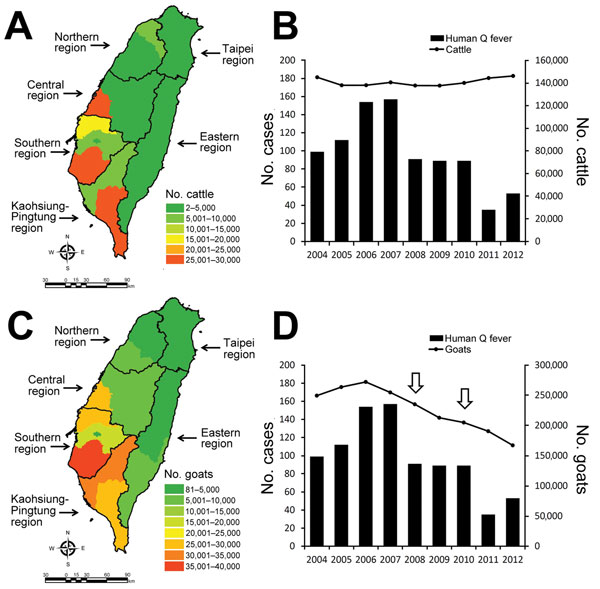Volume 21, Number 12—December 2015
Dispatch
Association of Human Q Fever with Animal Husbandry, Taiwan, 2004–2012
Figure 2

Figure 2. Q fever in cattle and goats and comparison with number of human Q fever cases, Taiwan, 2004–2012. A) Average number and distribution of cattle during 2004–2012; B) comparison of human Q fever cases and number of cattle showing no correlation (p = 0.123). C) Average number and distribution of goats during 2004–2012; D) comparison of human Q fever cases and the number of goats showing a significant correlation (p = 0.003). Arrows indicate goat pox epidemics of 2008 and 2010. The correlation between human Q fever, cattle, and goat was analyzed by Pearson’s correlation.
Page created: November 17, 2015
Page updated: November 17, 2015
Page reviewed: November 17, 2015
The conclusions, findings, and opinions expressed by authors contributing to this journal do not necessarily reflect the official position of the U.S. Department of Health and Human Services, the Public Health Service, the Centers for Disease Control and Prevention, or the authors' affiliated institutions. Use of trade names is for identification only and does not imply endorsement by any of the groups named above.